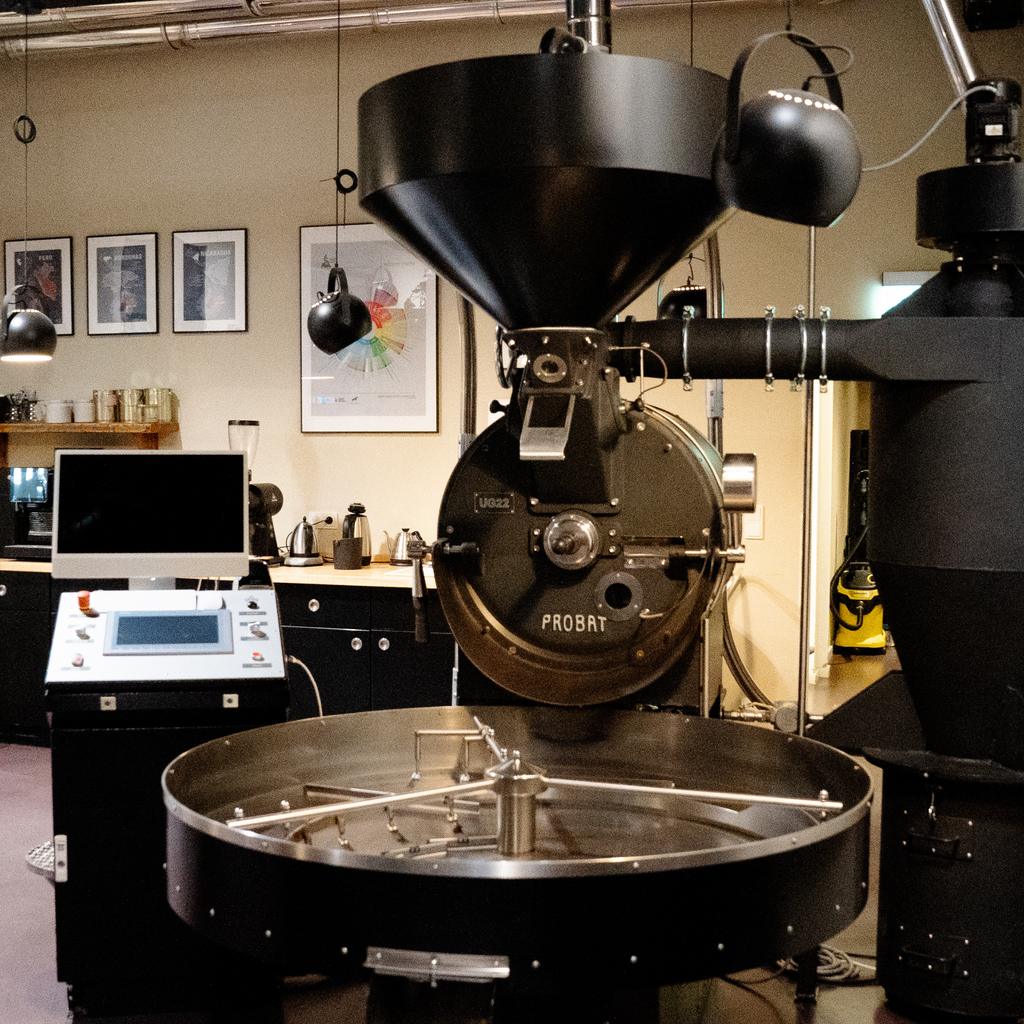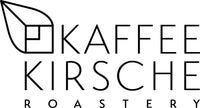From green coffee to bean: The everyday roasting of Kaffeekirsche

Have you ever wondered what everyday roasting looks like in a specialty roastery?
Every morning when we open the doors of our roastery, the aroma of freshly roasted coffee fills the room—warm, intense, and full of anticipation for the day. Before we roast the first batch of the day, we take one last look at the roasting log from the previous day. Each bean has its own roasting profile, which we have fine-tuned beforehand to develop the best aroma.
Then the preparation begins: The Probat UG22 drum roaster is preheated, and the first bag of green coffee is waiting to trickle into the hot drum. Now the actual roasting process begins.
As the beans constantly rotate in the preheated drum, they distribute the heat evenly. Hot air flows through the drum from below, slowly warming the beans. The temperature and airflow are precisely controlled to precisely adhere to the roasting curve. The first few minutes are crucial: The moisture escapes, and the beans slowly become lighter in color. There's still a slightly grassy aroma—an indication that the roasted aromas are still developing. This is where the Maillard reaction begins, in which sugars and amino acids react, brown pigments are created, and the first notes unfold.
Shortly thereafter, a crucial moment follows: the first crack – the moment when the bean's cell structure expands and cracks audibly. The bean's rich aroma unfolds. During this time, our roaster regularly samples beans with a tasting lance. Color, structure, and aroma provide the necessary clues for perfect timing. Even small changes in temperature or roasting time can influence the overall flavor profile.
During the roasting process, we need to monitor the temperature, regulate air circulation to efficiently remove moisture, and be fully engaged throughout. The aroma, the audible first crack, and the color of the beans determine the timing. Once the ideal roasting point is reached, the drum opens, and the hot beans fall into the rotating cooling screen. Here, they are cooled with air to immediately halt the roasting reactions.
Finally, each batch is packed into labeled buckets and documented – temperature, airflow, and roasting time. This ensures that the flavor remains consistent across different roasting days.
Want more? Come by and experience the roasting process firsthand at our roastery in Tempelhof!
